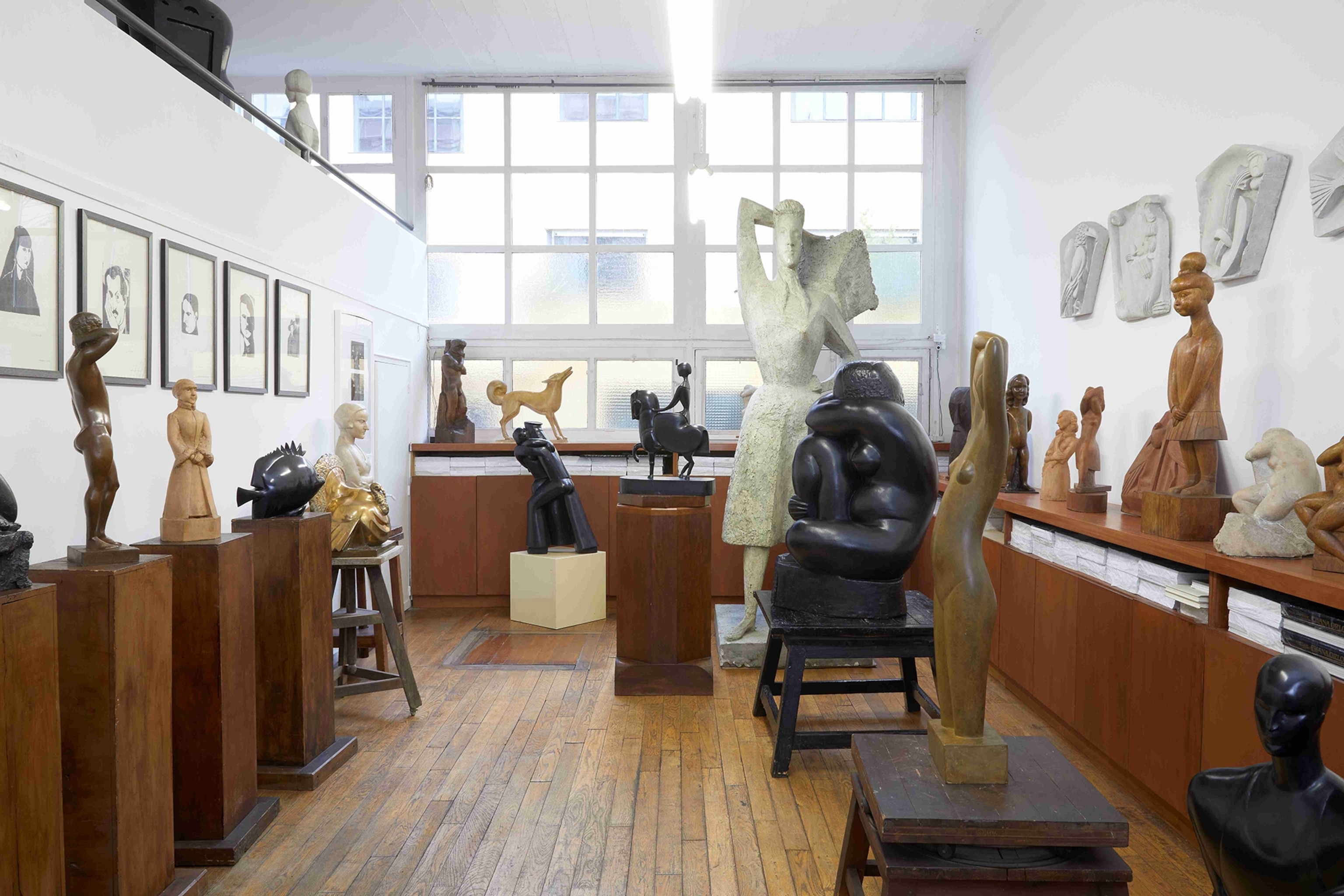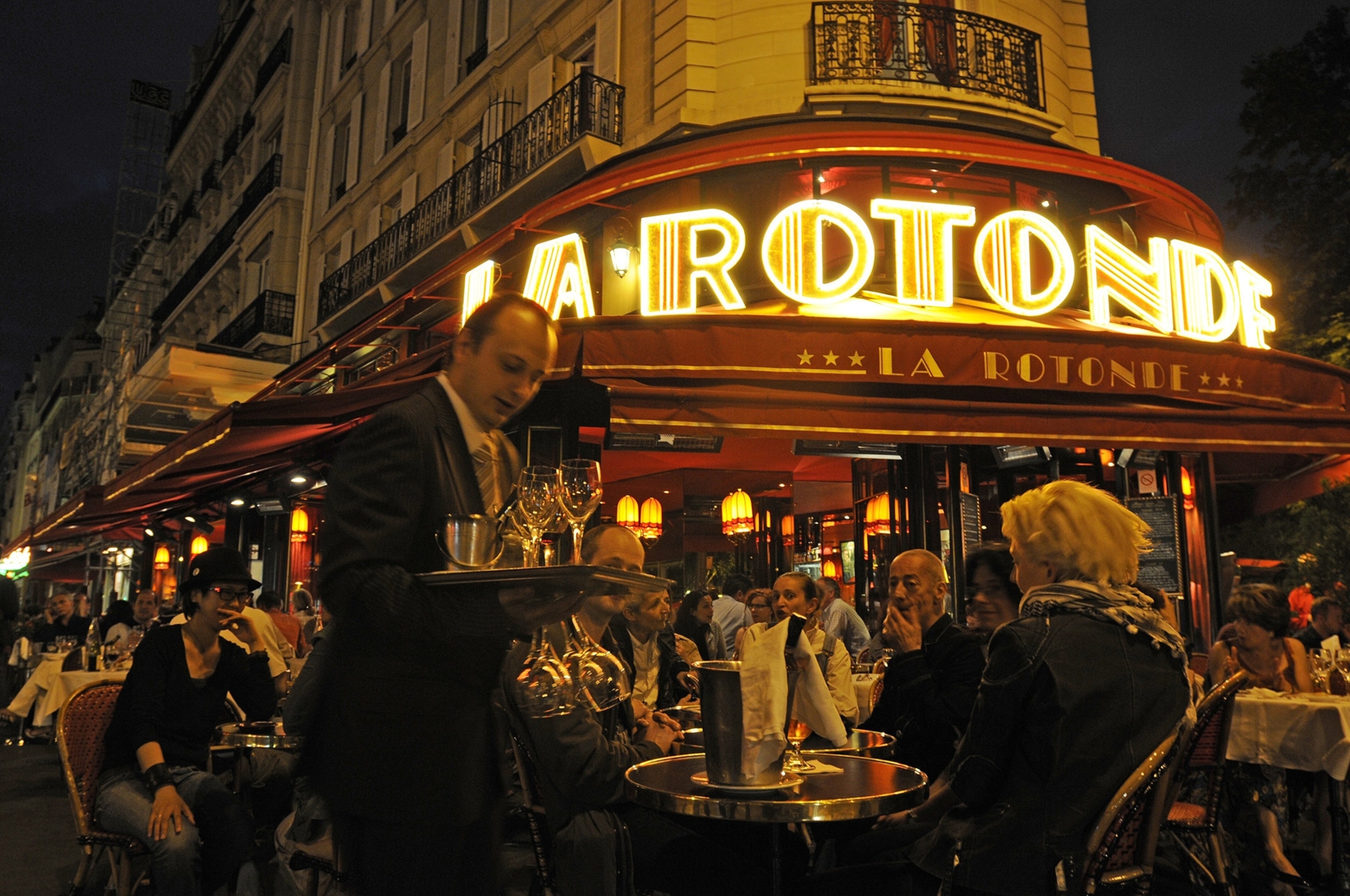6 ways to experience the Paris of the Roaring ’20s
From peeking into artist ateliers to sipping coffee at La Coupole, here’s how to still find the magic of Paris from when it last hosted the Olympics 100 years ago.

A century ago when Paris last hosted the Olympics, the city was a giant party, seducing visitors from all over the world. More than 600,000 spectators crowded the stands, including Americans who disembarked transatlantic liners at Le Havre. Between sports events, they took in the sights that made Paris one of Europe’s most touristed destinations at the time—including the Eiffel Tower, which showed off a new paint job for its 35th birthday. Above all, visitors soaked up the city’s exuberant ambiance.
The Roaring Twenties was a time of rule-breaking and artistic creativity. After the unspeakable horrors of World War I, the mood in the French capital embraced freedom and fun. It was a cosmopolitan scene: Kiki de Montparnasse danced on bar tops, Ernest Hemingway scribbled in cafés, Pablo Picasso prodigiously painted. “Paris was perceived as the capital of the world at the time,” said historian Pascal Blanchard, one of the curators of “Olympism: A History of the World” at the Palais de la Porte Dorée (Immigration History Museum).
The 1924 Olympics played out amid this urban fervor. Here’s how you can experience some of that Parisian spirit today.
Swim in an Olympic pool

This summer’s Games will take place amid the challenges of climate change. Paris 2024 organizers aim to cut the carbon footprint in half by prioritizing renewable energy, catering eco-friendly food, and restricting the building of new sports venues. An example of this sustainability strategy is the 50-meter pool where Johnny Weissmuller made history at the 1924 Games when he swam 100 meters in less than a minute. (Scoring three gold medals, the swimmer would later star as Tarzan in the movies.) Newly renamed for Georges Vallerey, a swimming champion and World War II hero, the century-old aquatic center with a retractable roof got a complete makeover using reclaimed materials. Now locals and visitors alike can dive into the pool that was the first in the world to be purpose-built for Olympic events. (The entry price for Paris pools is 3.5 euros. Check pool hours here, but note that the pool is not open to the public until after the Olympics.)
View art in Montparnasse

Nowhere better encapsulated the spirit of Les Années Folles (literally: the “crazy years”) than Montparnasse. École de Paris artists—think Marc Chagall, Amedeo Modigliani, and Kees Van Dongen—converged here to experiment with what’s now called “modern art.”
On cheap real estate that was once a slum, Montparnasse welcomed ateliers constructed with materials repurposed from World’s Fair pavilions. Many artists’ studios are privately owned now, but you can discern their former function by their large glass windows (look for Cité Fleurie on Boulevard Arago or Villa Vassilieff on Avenue du Maine). Other ateliers have been turned into museums, such as those of sculptors Ossip Zadkine and Chana Orloff.
Caffeinate at classic cafés

Cafés were central to the Montparnasse scene. “They represent a last surviving piece of the era,” says Edith de Belleville, a Parisian lawyer, author, and tour guide. “For the price of a cup of coffee, you can travel to the 1920s.” Particularly notorious were the four brasseries facing each other at the Carrefour Vavin: Le Select, Le Dôme, La Coupole, and La Rotonde. Hard-partying, Prohibition-fleeing Americans flocked to Le Select, the first in the quarter to stay open all night. Scenes from Hemingway’s The Sun Also Rises were staged here.
Today, tables still crowd the sidewalk terraces in front of this quartet. White-aproned waiters bustle across the mosaic floors at La Coupole—its prix-fixe lunch menu making it the most affordable of the bunch. Le Dôme serves seafood platters with Art Deco vibes, while La Rotonde’s red velvet banquettes hosted President Emmanuel Macron’s first victory party. It was in the bathroom at La Rotonde that Kiki de Montparnasse, artists’ muse and icon of the era, would wash her feet before posing for Japanese painter Foujita. Man Ray fell under her spell, publishing a groundbreaking photo in 1924 in the surrealist magazine Littérature. A copy of the portrait—depicting Kiki’s voluptuous back in the form of a violin—sold for a record-breaking $12.4 million at a 2022 Christie’s auction in New York.
(Want to see the real Paris? Walk this way.)
Sip a sidecar—or an absinthe
Just around the corner from La Rotonde, Dingo’s Bar—where Hemingway first met F. Scott Fitzgerald—has been preserved inside an Italian restaurant called the Auberge de Venise. And next to Port Royal, La Closerie des Lilas—where Fitzgerald asked Hemingway to read The Great Gatsby—is “one of the rare places in Paris you can drink a real absinthe,” says de Belleville.
Across town at the Place Vendôme, the Ritz Paris opened its first bar in 1921, which Hemingway claimed to have “liberated” at the end of World War II. Today there are two chic watering holes. The no-reservations Bar Hemingway draws a nightly line of cocktail enthusiasts keen to sip a sidecar surrounded by vintage memorabilia, while the Ritz Bar is a contemporary ode to astrology and couture-style mixology.
The drinks also flow freely at Maxim’s. Born in the belle epoque and a legend by the 1920s, Maxim’s today channels the era’s revelry with live, costumed entertainment. A recent renovation by the Paris Society hospitality group restored the art nouveau splendor of celebrated artists Alphonse Mucha and Hector Guimard. “Paris will only be ruined the day Maxim’s disappears,” writer and filmmaker Jean Cocteau once remarked.
Watch a film at a historic cinema
Beyond the wild parties, Paris was a cultural trailblazer in the 1920s. Le Louxor opened in 1921 in the 10th arrondissement as one of the capital’s first cinemas. It was the brainchild of businessman Henri Silberberg, who had attended the Lumière Brothers’ first paid movie screenings in 1895. Decked out in hieroglyphs, the 1,140-seat venue drew its stylistic inspiration from both art deco and ancient Egypt (the 1922 discovery of King Tut’s tomb only further fueled this decorative trend in Paris). Nowadays the “cinema palace”—which had a stint as a nightclub in the 1980s—screens a wide variety of films.
Catch a spectacle

The Bal Blomet opened in 1924 as a cabaret west of Montparnasse. Nicknamed the “Bal Nègre,” the multicultural spot drew the beau monde for beguine music from Martinique. Today the restored venue is billed as the oldest jazz club in Europe still in operation.
A sensational new entertainment genre wowed audiences at the Folies Bergère, originally inaugurated as a 19th-century pleasure house for the nobility. Modeled after London’s Alhambra, it was Paris’s first music hall, and the “revues”—as the shows were called—combined comedy, dance, crazy costumes, and nudity. Spectators circulated freely as they drank, smoked, and took in over-the-top spectacles. Director Paul Derval, who ruled the roost for 50 years, recruited big names to the stage like Josephine Baker, who danced in her infamous banana skirt (1926). Nowadays the acts run the gamut from Jean-Paul Gaultier’s 2019 Fashion Freak Show to big-name concerts.
During the 1920s, the Théâtre des Champs-Elysées showed off the Ballets Suédois. The troupe’s productions were a synthesis of modernist art and music conceived by major talents such as Fernand Léger, Jean Cocteau, and Cole Porter. The architecture itself was innovative: constructed in reinforced concrete, in a pioneering art deco style. Inside, the theater allowed perfect visibility of the stage—without columns blocking the view. “The first spectators were terrified the balconies would collapse,” says guide Ophélie Lachaux. The theater was also audacious in its programming, starting with the scandalous 1913 performance of Igor Stravinsky’s The Rite of Spring. Later, Josephine Baker made her Paris debut with the “danse sauvage” during La Revue Nègre (1925)—a show infused with the in-demand “exoticism” that bewitched Parisian audiences at the time.
Designated a historic monument, the theater continues to stage original productions every year, not satisfied with just performing the classics. Says Lachaux: “There is a desire for creation, a need for creation”—a zeitgeist of the Roaring Twenties that’s still en vogue in Paris today.
(17 ways to discover the City of Light this summer.)
Mary Winston Nicklin wrote the August 2024 National Geographic Magazine cover story on the Seine river. Follow her on X.
You May Also Like
Go Further
Animals
- 5 clever animals that treat and prevent their own illnesses5 clever animals that treat and prevent their own illnesses
- What would the world look like without mosquitoes?What would the world look like without mosquitoes?
- Social media loves to villainize dolphins. Here's why it's wrong.Social media loves to villainize dolphins. Here's why it's wrong.
- How did wolves evolve into dogs? New fossils provide cluesHow did wolves evolve into dogs? New fossils provide clues
- This unorthodox method is saving baby parrots from extinctionThis unorthodox method is saving baby parrots from extinction
Environment
- ‘Corn sweat’—and other weird weather phenomena—explained‘Corn sweat’—and other weird weather phenomena—explained
- A sea tornado sank a yacht. We might see them more often.A sea tornado sank a yacht. We might see them more often.
- How billions of dollars are revolutionizing ocean explorationHow billions of dollars are revolutionizing ocean exploration
History & Culture
- How did ancient Egyptian obelisks end up all over the world?How did ancient Egyptian obelisks end up all over the world?
- What we’ve learned—and lost—since the Titanic wreck was foundWhat we’ve learned—and lost—since the Titanic wreck was found
- Did Babe Ruth really ‘call’ this legendary home run?Did Babe Ruth really ‘call’ this legendary home run?
- The real history behind the legend of China's Monkey KingThe real history behind the legend of China's Monkey King
- How new technology transformed the American workforceHow new technology transformed the American workforce
Science
- Is mouth taping the secret to a better night's sleep?Is mouth taping the secret to a better night's sleep?
- Mold is in your kitchen—and in places that might surprise youMold is in your kitchen—and in places that might surprise you
- Why some say tennis is 'the world's healthiest sport'Why some say tennis is 'the world's healthiest sport'
Travel
- Discover America's Oktoberfest capital: CincinnatiDiscover America's Oktoberfest capital: Cincinnati
- Here's what an astronaut has to say about space tourismHere's what an astronaut has to say about space tourism
- 4 of the best food experiences on Scotland's Isle of Skye4 of the best food experiences on Scotland's Isle of Skye
- These are the must-see sights of Italy's Veneto regionThese are the must-see sights of Italy's Veneto region
- A guide to St John's, Atlantic Canada's iceberg capitalA guide to St John's, Atlantic Canada's iceberg capital






